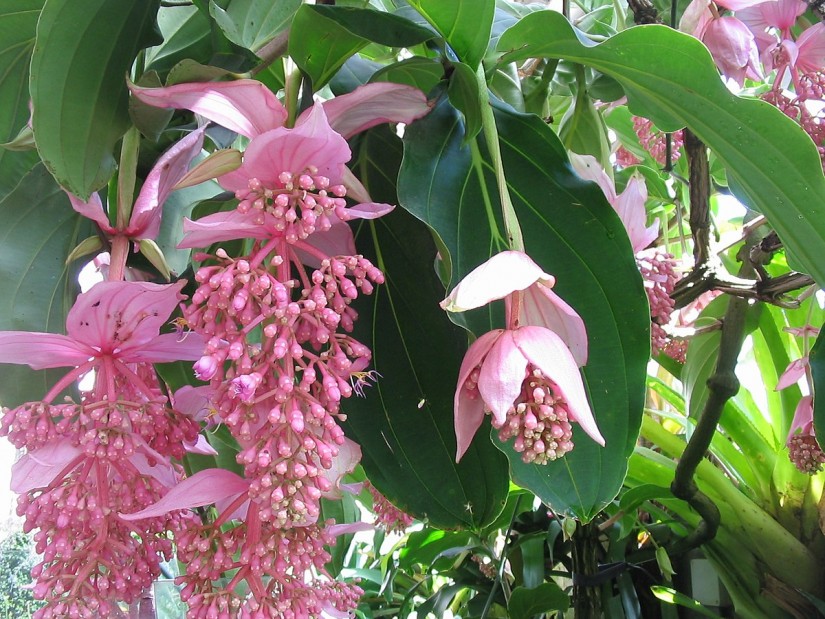The Medinilla is an ornamental plant with big pink clustered inflorescences.
Her elegant, highly decorative appearance made her earn the title of "Magnifica", the Italian for "showy" or "magnificent".
It is known as the "summer plant" because it blooms from the beginning of spring until the end of the warm months.
Native to the tropical forests of south-east Asia, it prefers a shady, warm and very humid environment.
General characteristics
In the native countries, the Medinilla develops in the cavities of the trunks of the trees and often reaches a height of two metres.
Instead, cultivated in an apartment in a sufficiently big pot, its average height is about 120 cm.
It has a fast growth, with persistent and ample leaves which may exceed the 20 cm of length, of dark green colour, with very evident veins.
Light, water and temperature
The Medinilla Magnifica needs a humid and temperate climate, with an ideal temperature of about 25 º C throughout the year.
In particular, in the spring-summer period, it resists well with temperatures between 18° and 27° Celsius, while in the colder months it should never be exposed to less than 15° Celsius.
It is a rather demanding plant: in order to obtain a luxuriant growth, it must be placed in a luminous place, not exposed to direct sunlight, and fairly ventilated, far from the air currents and especially from the radiators.
It has to be constantly watered with moderate amounts of water without limestone and at room temperature, so that the soil remains always humid, but without stagnation.
In the warm season, it benefits from the nebulization of water on the leaves, taking care not to wet the flowers, which would instead be ruined.
Soil type and fertiliser
Due to its tropical origins, the Medinilla Magnifica needs an acidic and draining loam, and for this reason it is necessary to enrich it with humus, peat and some perlite.
In order to facilitate the flowering, during the development period it is advisable to give some phosphorus fertilizer, interrupting the fertilization during the winter rest.
Sowing, pruning and repotting
The Medinilla magnifica reproduces by cutting in spring.
This operation is rather delicate, and to be successful it must be done very carefully using fresh soil with peat and lots of sand.
Therefore, it is necessary to create a sufficiently humid environment, shaded and with constant temperature, covering the cuttings with a plastic cloth or putting them in a greenhouse until the first buds appear.
The possible prunings are to be done after the summer, in order to eliminate the dried, too grown or weak stems.
Instead, in order to increase the ramification, it is necessary to sprout the younger branches.
After the first flowering, the Medinilla magnifica has to be repotted every year using a soil rich in organic substance.
When it completes its ripening, it requires a repotting every 3 or 4 years.
Advice and special care
For a greater well-being of Medinilla Magnifica, it is advisable to use very wide undergarments, filled with expanded clay.
However, care should be taken that the plant does not come into contact with water to prevent the roots from rotting.
The Medinilla has a great ornamental value, but after the purchase it may begin to lose the leaves.
This is why it is important to ensure that it is immediately placed in conditions similar to those of the greenhouse from which it originates.
It is quite resistant to parasites, but if the environment is not humid enough, it can be attacked by mealybugs.
To remedy this problem, it is sufficient to spray the leaves daily on both sides or to use a specific insecticide.
During the flowering period, the stems may bend excessively and risk breaking.
For this reason it might be useful to plant braces in the ground as support.

WE PRODUCE HIGH QUALITY DESIGN POLYETHYLENE ITEMS
